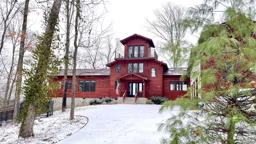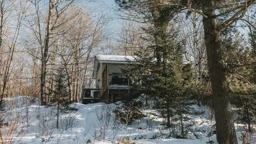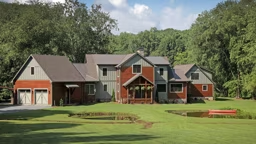Miami native Jim Gifford, his wife, Lani, and their three young children first visited Montana in 2000, not knowing that the trip would soon change their lives.
“I had the stereotypical view of the West gained from watching television and going to the movies,” Jim says. “Montana was a revelation. It opened our eyes to another world. And eventually it made me want to provide my family with an alternative to bright and shiny city life, shopping malls and video games.”
The Giffords bought a parcel of land with a private lake and a view of Holland Peak, the highest point in the Swan Mountain Range. When Jim and Lani considered where to site the cabin, they gave a great deal of thought not only to the lay of the land but to how the cabin would fit in with the rich tradition in that part of Montana.
“I have a deep appreciation of history,” says Jim. “I wanted our cabin to blend in with the history of this region – to look, in fact, like it had been here 100 years.”
Jim selected Bigfork, Montana-based Bigfork Builders to build his dream cabin. “The people at Bigfork understood my tastes, as did all the professionals working on the project,” he notes. “We were lucky to be working with a crew that loved what they did and did what they loved very well.”
Brad Reedstrom, one of the founders of Bigfork Builders, figured the best way to comply with the Giffords’ wishes would be to actually work with 100-year-old wood. He turned to Wildwood Eccentrics’ proprietor JL Halverstadt for help. Halverstadt found logs recovered from the Stimson Dam, built in 1886 on the Blackfoot River of “A River Runs Through It” fame.

“The dam was an all-wood dam, attached with wrought-iron pins – a rarity,” says Halverstadt, a former logger. “Most of the wood is ponderosa pine. It has ferris staining, giving it a spectacular bluish-black tone. Knots stick up from the wood a whole inch or an inch-and-a-quarter.”
“The raised grain screamed ‘really old,’ ” states the builder. “Our original plan was to dovetail the logs at the corners, but we decided it would be a disservice to the wood. We saddle-notched the corners and left the ends exposed.” The interior of the house also comprises natural or reclaimed materials, such as surface stones, barn wood and corral planks.
The use of such local materials factored well into the cabin’s Gold-Level certification under the National Association of Home Builders’ (NAHB) Green Building Standard program. “Our approach was fairly straightforward,” the builder explains. “We wanted a tight building. We put 2 inches of foam on the inside of the logs and fastened the interior walls to the logs through the foam. It’s an energy-efficient structure, trapping cool air in the summer and warm air in the winter.”
The Giffords use their cabin chiefly during the warmer months. “We do a lot of entertaining in the summer,” says Lani. “Our friends and family love it. They can do things they’ve never done before. We regularly celebrate July the Fourth at the cabin. We hike, ride horseback and swim in the lake. As we tell our friends, Montana is not a place to see – it’s a place to do.”
Christmases provide an opportunity to partake in some less-frequent activities for the family. “That’s a different experience for Floridians,” says Jim. “Items on the to-do list in the winter include skiing, snowmobiling and snowshoe hiking.” Not to mention gazing at the snow-covered, isolated splendor of ancient Holland Peak from the warmth of their not-so-new cabin.
Cabin Details

Built: Early 2000
Location: Western Montana
Square feet: 1,480
Bedrooms: 2
Baths: 2.5
Location: Western Montana
Square feet: 1,480
Bedrooms: 2
Baths: 2.5










